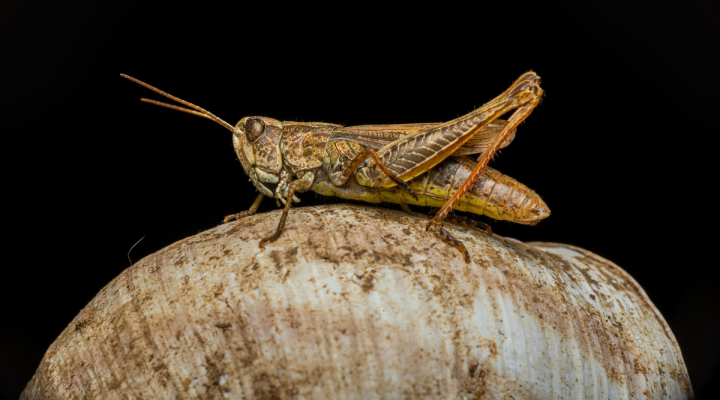
In a world increasingly concerned with sustainable protein sources, edible insect farming represents one of the most promising yet underutilized approaches for environmentally conscious food production. While the concept might initially seem strange to Western sensibilities, home-scale insect farming offers remarkable benefits: minimal space requirements, low environmental impact, and impressive nutritional profiles that rival or exceed conventional protein sources.
This guide will walk you through everything you need to know about setting up your own edible insect farm in even the smallest apartment setting, from choosing the right species to harvesting and preparing your micro-livestock for delicious, nutritious meals.

Why Farm Insects at Home?
Before diving into the specifics, let’s consider why small-scale insect farming makes so much sense:
Insects convert feed to protein with remarkable efficiency—crickets require 12 times less feed than cattle to produce the same amount of protein. They produce minimal greenhouse gases, consume very little water, and require just a fraction of the space needed for conventional livestock. A small container on your countertop can produce enough protein to supplement several meals per week.
For apartment dwellers with sustainability goals, insect farming represents one of the few forms of animal protein production that’s genuinely feasible within limited space. Unlike traditional pets, edible insects are quiet, odorless when properly maintained, and require minimal daily attention.
Best Edible Insects to Farm in Small Apartments
The insect world offers numerous edible species, but not all are equally suited for apartment farming. These top contenders balance ease of care, space efficiency, and culinary utility:
1. Crickets (Acheta domesticus)
Crickets represent the gold standard for beginner insect farmers. These familiar insects thrive in simple container systems and offer excellent nutritional value with approximately 65% protein by dry weight. Their mild, nutty flavor makes them highly versatile in the kitchen.
In terms of space efficiency, a single plastic tub measuring 18″ × 12″ × 12″ can house and produce hundreds of crickets in ongoing cycles. Crickets complete their lifecycle in about 6-8 weeks, meaning you can harvest continuously once your system is established.
Their primary drawback is the males’ chirping, though this can be mitigated by keeping the container in a closet or using females only for quieter farming.
2. Mealworms (Tenebrio molitor)
For those concerned about noise or who prefer an even simpler starting point, mealworms offer an excellent alternative. These beetle larvae are completely silent, produce minimal odor, and thrive in shallow containers filled with simple bedding like wheat bran or oatmeal.
A small shoebox-sized container can produce hundreds of mealworms in ongoing cycles. Their complete lifecycle takes approximately 3-4 months from egg to adult beetle, but a properly staggered system will provide continuous harvests.
Mealworms offer about 50% protein content with a mild, nutty flavor that works beautifully in baked goods or as a mince replacement in numerous recipes.
3. Black Soldier Fly Larvae (Hermetia illucens)
For those interested in waste reduction alongside protein production, black soldier fly larvae represent an exciting option. These remarkable creatures can process compost materials with astonishing efficiency, including food scraps that would otherwise go to waste.
A small container system taking up just 1-2 square feet of space can process several pounds of food waste weekly while producing protein-rich larvae (approximately 40% protein) that can be harvested for human or pet consumption.
These larvae have a lifecycle of approximately 2-3 weeks under optimal conditions, making them one of the fastest-producing edible insects. Their flavor is stronger than crickets or mealworms, with earthy notes that work well in savory applications.
4. Superworms (Zophobas morio)
Larger cousins to mealworms, superworms require similar care but offer greater individual size—each larva grows to approximately 2 inches long. This makes them easier to handle and process for cooking.
Their nutritional profile includes approximately 40% protein, and their larger size means more meat per insect, reducing processing time. They thrive in similar bedding materials to mealworms and require minimal space—a medium plastic tub can house hundreds.
Culinary applications overlap with mealworms, though their larger size makes them excellent candidates for dishes where individual insects are featured rather than ground.
Setting Up Your Apartment Insect Farm
Now that we’ve identified the best candidates, let’s examine how to set up functional farming systems that won’t overwhelm your living space.
Basic Cricket Farm Setup
Here’s what you’ll need for a beginner cricket farm that can fit on a shelf or in a closet:
- Container: A plastic tub (approximately 18″ × 12″ × 12″) with a secure, breathable lid. Modify the lid with fine mesh for ventilation.
- Habitat components: Egg cartons or cardboard dividers create vertical living space, multiplying the effective capacity of your container. Position these vertically to maximize space.
- Substrate: A thin layer of coconut coir or chemical-free potting soil in one section of the container provides a laying medium for females.
- Food and water: Small dishes for vegetable scraps and water. Use a water crystal product (the same type sold for plants) to provide hydration without drowning risk.
Set up your farm in a warm location (75-90°F is optimal) away from direct sunlight. Crickets prefer darkness during daylight hours, so a closet or cabinet works well. No special lighting is required.
Feed your crickets daily with vegetable scraps, grains, or commercial cricket feed. Within 6-8 weeks, you’ll have your first harvestable generation.
Simple Mealworm Production System
For mealworms, the setup is even simpler:
- Container: A shallow plastic container (shoebox-sized works well) with a ventilated lid.
- Bedding/food: Fill the container 2-3 inches deep with wheat bran, oatmeal, or cornmeal, which serves as both habitat and food source.
- Moisture source: Add small pieces of carrot, potato, or apple for moisture. Replace these every few days to prevent mold.
Mealworms thrive at room temperature (65-80°F), making them ideal for apartment settings without special heating. Their lifecycle progresses from egg to larva to pupa to beetle, with each generation of beetles laying hundreds of eggs to continue the cycle.
Separate containers can be used to organize different life stages, allowing for continuous production. Many farmers create a three-bin system: one for beetles to lay eggs, one for growing larvae, and one for pupae transitioning to beetles.
Harvesting and Processing Your Insects
Proper harvesting and processing transforms your farmed insects from livestock to ingredient. Here’s how to approach this step for maximum quality:
Purging
Before harvesting, it’s advisable to “purge” your insects by feeding them clean food like carrots or apples for 24-48 hours. This clears their digestive tracts and improves flavor.
Humane Harvesting
The most humane method for harvesting is to place your insects in a freezer for 15-20 minutes. This slows their metabolism until they painlessly enter hibernation and then pass away. This method preserves the nutritional quality while being ethical.
Processing Options
After harvesting, you have several processing paths:
- Whole roasting: Simply roast your cleaned insects in an oven at 225°F for approximately 1-2 hours until crisp. Season as desired during or after roasting.
- Dehydrating: A food dehydrator set to 125-135°F will dry insects over 6-8 hours, creating shelf-stable ingredients that can be ground into powder or used whole.
- Flour production: Dehydrated insects can be ground in a coffee grinder or high-powered blender to create protein-rich flour for baking or adding to smoothies.
- Freezing: Processed insects can be frozen for later use, extending their shelf life for months.
Practical Recipes for Your Harvested Insects
Knowing how to incorporate your harvested insects into delicious meals is essential for sustainable consumption. Here are some apartment-friendly recipes that make excellent use of your homegrown protein:
Cricket Flour Banana Bread
Incorporate 1/4 cup of cricket powder into your favorite banana bread recipe for a protein boost that maintains the familiar texture and flavor while adding nutritional benefits. The natural sweetness of banana bread complements the nutty notes of cricket powder perfectly.
Mealworm Stir-Fry
Toast 1/2 cup of cleaned mealworms in a dry pan until crisp, then add to stir-fried vegetables with soy sauce, ginger, and garlic. The mealworms add a crunchy texture similar to small shrimp while absorbing the sauce flavors beautifully.
Black Soldier Fly Fritters
Blend 1/2 cup of processed larvae with chickpea flour, spices, and finely chopped vegetables to create savory fritters that can be pan-fried with minimal oil. Serve with yogurt-based dipping sauce for a protein-rich appetizer.
Superworm Tacos
Season roasted superworms with taco seasoning and use as you would ground beef in tacos. Their substantial texture holds up well to the treatment, and when combined with traditional toppings, they create a sustainable twist on a familiar favorite.
Common Challenges and Solutions
Even the simplest farming systems encounter occasional challenges. Here are solutions to the most common issues apartment insect farmers face:
Temperature Fluctuations
Problem: Apartment heating/cooling may create suboptimal temperatures. Solution: Place your farm in a naturally stable location (interior closets work well) or use a small heat mat designed for plant seedlings to maintain consistent temperatures.
Mold Development
Problem: Excessive moisture can lead to mold, particularly in mealworm bins. Solution: Ensure good ventilation, promptly remove uneaten fresh foods, and maintain appropriate humidity levels (approximately 50-70% is ideal for most species).
Escape Artists
Problem: Poorly sealed containers may allow insects to escape. Solution: Use containers with tight-fitting lids modified with fine mesh (smaller than your insects) for ventilation. Create a barrier around the container’s upper edge with petroleum jelly or teflon tape to prevent climbing.
Lifecycle Management
Problem: Populations boom and crash without proper management. Solution: Implement a staggered production system with separate containers for different life stages, allowing continuous harvest without depleting breeding stock.
Scaling Up: Beyond Beginner Systems
As you gain confidence, consider these approaches to increase production while maintaining your apartment’s space constraints:
Vertical Farming
Utilize vertical space with stacked container systems. A simple shelving unit can house multiple insect colonies in a footprint of just 2-3 square feet, dramatically increasing production without expanding floor space.
Automated Systems
Small-scale automation can improve efficiency. Simple timers for heating elements, automated feeding systems using repurposed pet feeders, and humidity controllers can reduce daily maintenance while optimizing conditions.
Selective Breeding
Over time, you can select for desirable traits in your insect colonies—larger size, faster growth rates, or specific flavor profiles. Keep detailed records of which breeding groups produce the best results and selectively maintain those genetic lines.
The Future of Urban Insect Protein
Home insect farming represents more than just a novel hobby—it’s part of a growing movement toward sustainable urban food production. As climate concerns intensify and traditional protein sources face increasing scrutiny for their environmental impacts, insects offer a practical path forward.
By establishing your apartment farm today, you’re not only securing a sustainable protein source for your household but also developing valuable skills that may become increasingly relevant in our resource-constrained future.
The practice connects us to food traditions that humans have maintained for thousands of years across cultures, while simultaneously embracing cutting-edge sustainability principles. It’s both ancient wisdom and forward-thinking innovation contained in a simple plastic tub on your countertop.
Getting Started Today
The most important step in insect farming is simply beginning. Start with a single species in a modest setup, learn through direct experience, and expand as your confidence grows.
Most beginners find success starting with either crickets or mealworms, as these species are widely available, well-documented, and forgiving of minor care mistakes. Online suppliers ship starter colonies directly to your door, often with basic equipment included.
Remember that insect farming, like any skill, improves with practice. Each generation provides new insights and opportunities for refinement. Document your process, connect with the growing community of urban insect farmers online, and don’t be afraid to experiment within the basic parameters of good care.
Your small apartment farm represents a meaningful step toward a more sustainable food system—one that acknowledges the realities of urban living while refusing to compromise on environmental values. It’s a practical demonstration that meaningful food production can happen anywhere, even in the heart of the city, one cricket at a time.












